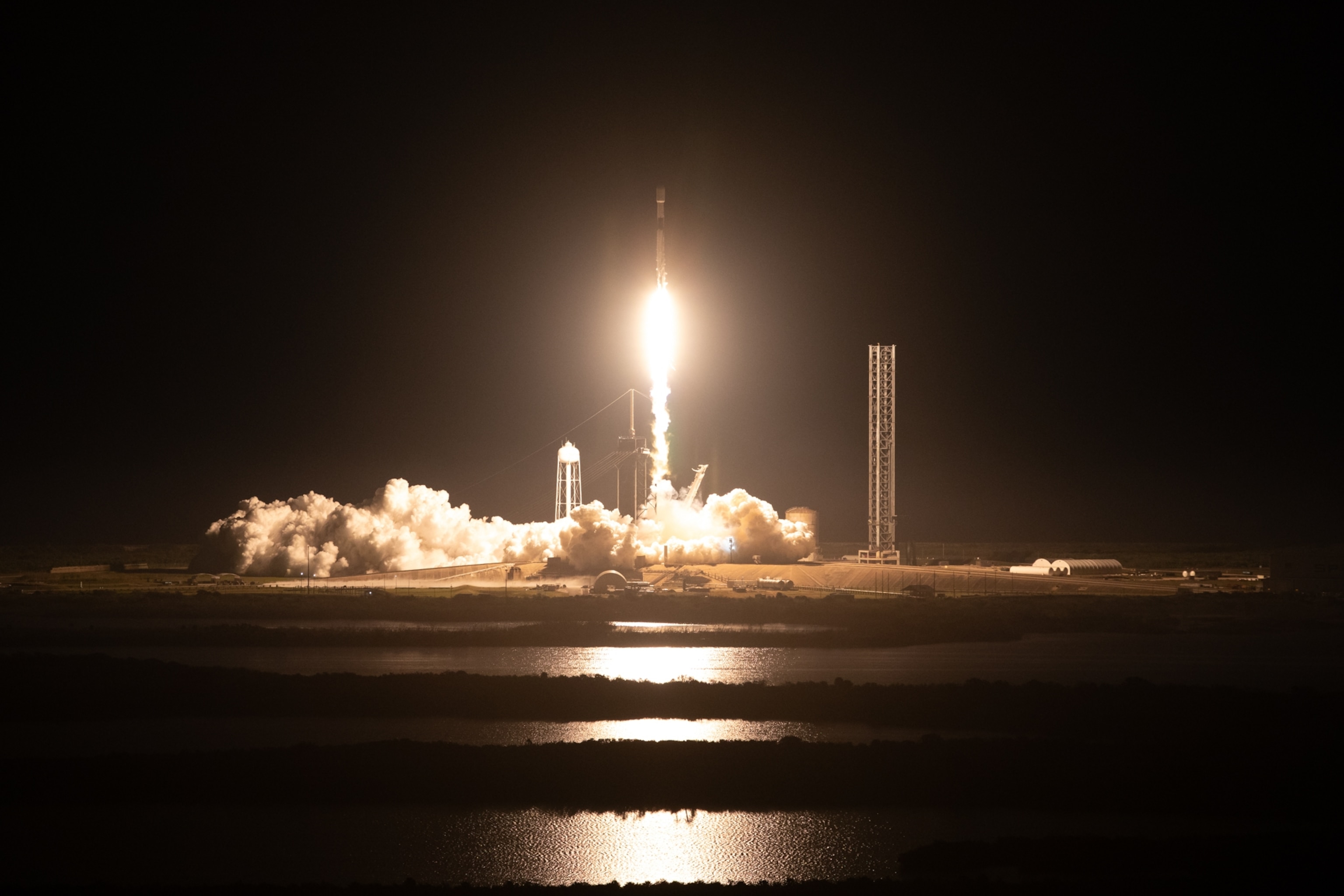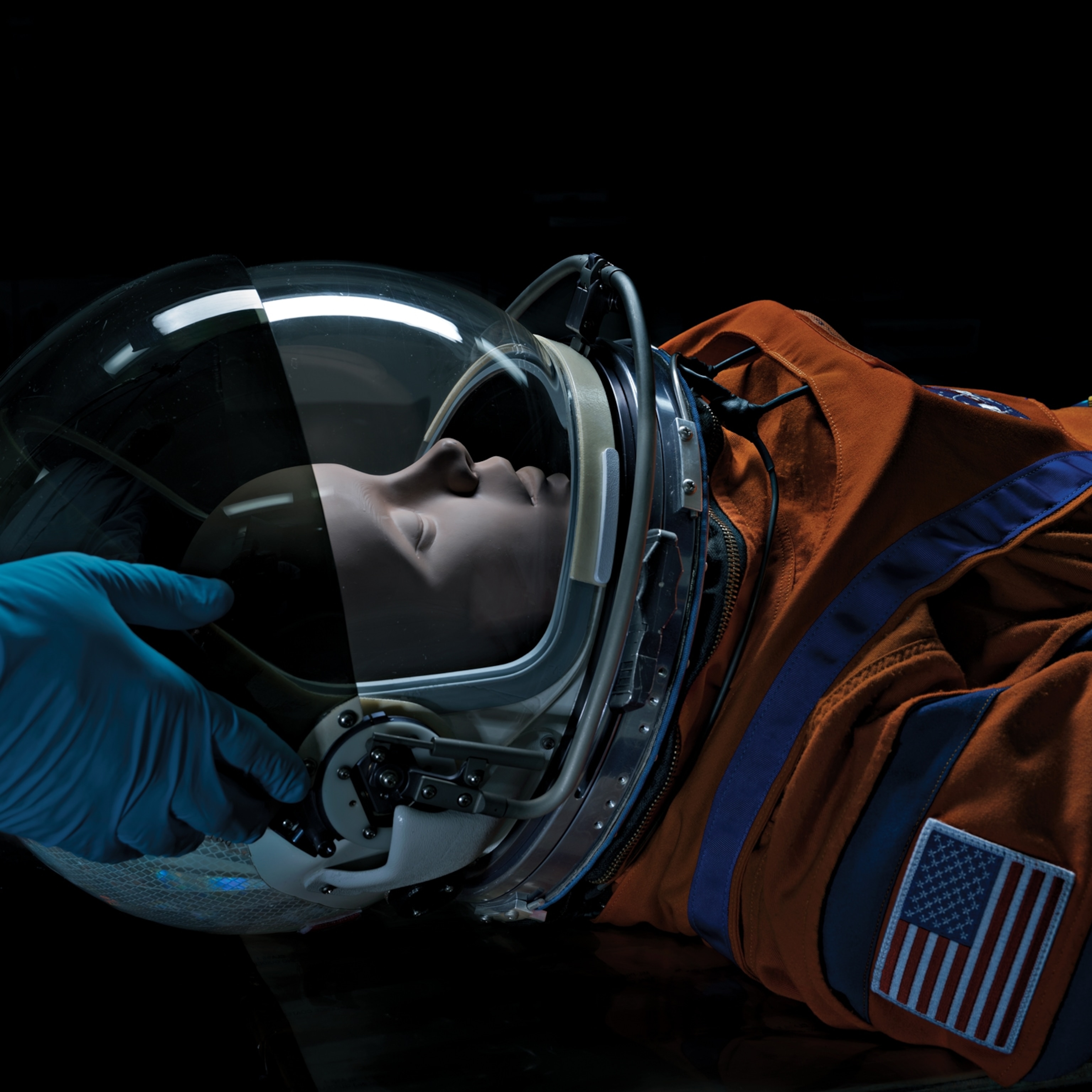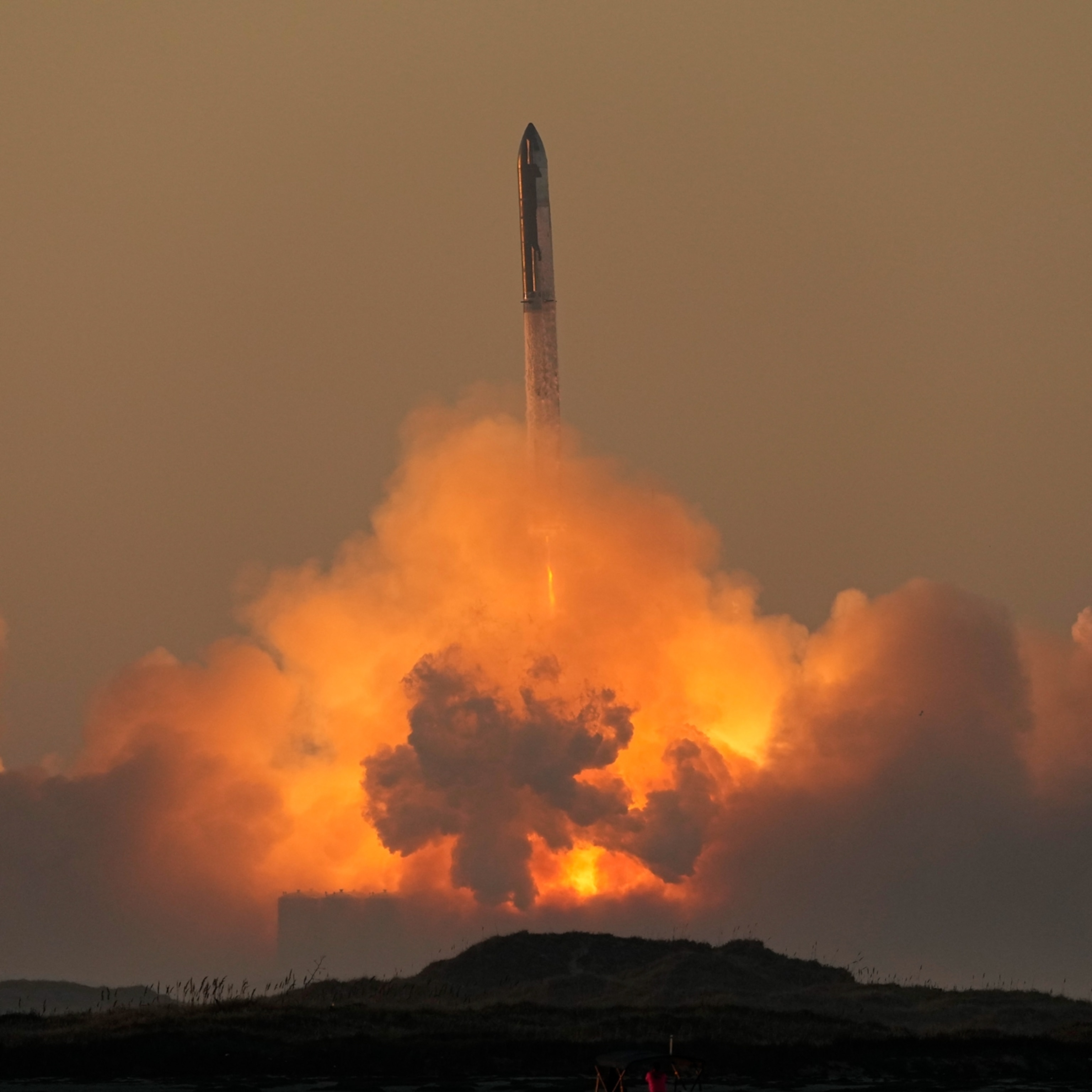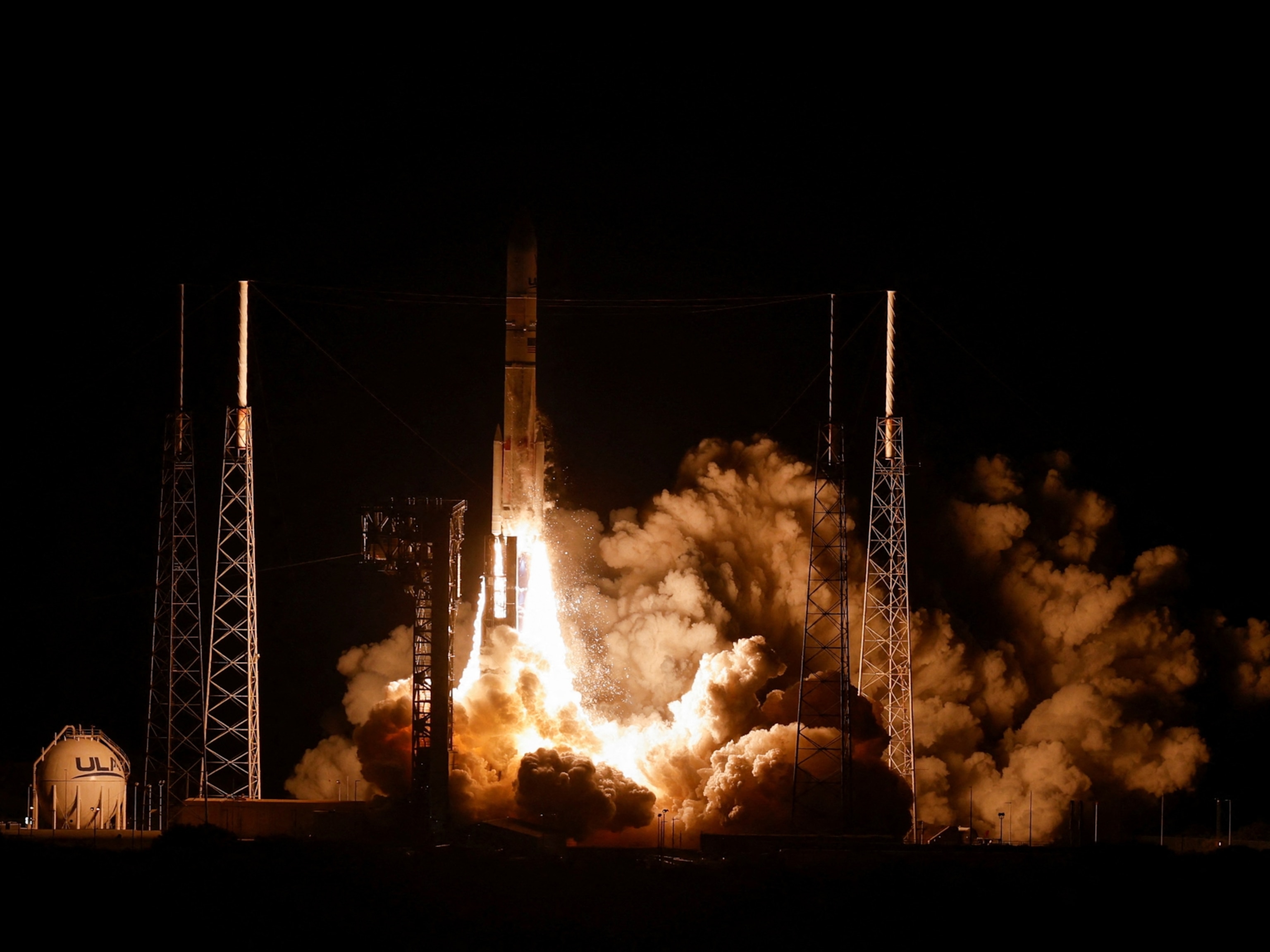U.S. returns to the moon as NASA's Odysseus successfully touches down
For the first time since 1972, an American mission has landed on the moon for NASA, the first steps in the possible commercialization of deep space.

In a historic event, a lunar lander named Odysseus has touched down on the moon’s south pole. It’s the first American mission to the lunar surface since 1972, and the first landing of the Artemis program, NASA’s effort to return people to the moon for extended stays.
"We are on the surface and we are transmitting," Steve Altemus, CEO of Intuitive Machines, the private company that built the lander, said on a live broadcast. "Welcome to the moon."
NASA administrator Bill Nelson called it "a landing of a lifetime" moments after the touchdown, which occurred at 6:23 p.m. EST. "The U.S. has returned to the moon," he says. "Today is a day that shows the power and promise of NASA's commercial partnerships. What a triumph."
The company is unsure of the exact position of Odysseus, but it is alive and talking, following several stressful minutes of silence after landing.
Tensions were also high an hour before, when the spacecraft's primary guidance system stopped working. Mission controllers had to rely on NASA lasers onboard Odysseus to provide the needed light beams, delaying the landing and prompting the lander to circle for an additional orbit around the moon.
This mission, IM-1, will test landing equipment and scout the prospective location of a future crewed outpost. The Nova-C lander is located next to the crater Malapert A, parts of which are in near-constant darkness—possibly enough to preserve the ice needed to support an inhabited outpost or colony. The lunar south pole is “one of the best locations for a sustained human presence on the moon,” according to NASA.
Odysseus, which launched from NASA’s Kennedy Space Center on February 15, carries six NASA payloads, including equipment to conduct radio astronomy, examine space weather, and analyze the lunar surface. It’s built and operated by Intuitive Machines, which is on the forefront of solar system exploration. This landing is also the first successful lunar touchdown by a commercial company. (Read more about the history of moon exploration.)
NASA hopes for more. Today’s landing is the second of many planned robotic lunar missions for the space agency, each in the hands of Intuitive Machines or other private space companies. The first failed in late December, when a lander operated by the company Astrobotic suffered a fuel-sapping propulsion failure.

Now, by landing Odysseus safely, Intuitive Machines has provided a deep-space example of NASA’s transfer of spacecraft engineering and operation to private companies, says Altemus, who was formerly a deputy director at NASA’s Johnson Space Center.
“We're proving that commercial companies now can do the hard things that were only the purview of sovereign nations."
Space scout
The Odysseus lander is a hexagonal cylinder, adorned with foil-wrapped instruments and fixed with six metallic legs. A single engine, used for both propulsion and landing, draws from internal liquid methane and liquid oxygen tanks. Dark rectangles of solar panels are designed to generate 200 watts of power on the moon’s surface.
IM-1 is carrying a slew of experimental NASA sensors that will aid in subsequent missions. These include range-finding laser radar systems that help navigate during landings, as well as eight retroreflectors placed on the moon’s surface that will serve as permanent markers for approaching spacecraft.
On the surface, a NASA-designed low-frequency radio receiver will measure the impact of space weather and human activity on the lunar environment. In a precursor to the kind of astronomy that many hope to conduct on the moon, the experiment will also detect radio emissions from the sun, Jupiter, and Earth.
A small camera satellite called EagleCam, built by Embry-Riddle Aeronautical University faculty and students, deployed during the descent to capture the first-ever third person views of a moon landing. (See a stunning new glimpse of the moon’s south pole.)
Odysseus landed directly next to a potential landing site for NASA’s Artemis III mission, and a candidate location for an inhabited base. The question is, when will the astronauts arrive? NASA’s moon program is now at least six years behind schedule and six billion over budget, according to a May report by NASA’s Office of the Inspector General.
Jim Free, the space agency's chief official for human spaceflight in deep space, recently said at a public presentation that NASA would spend $41.5 billion on the Artemis program between 2024 and 2028, with only a single human landing to show for it. The solitary crewed mission, now set for 2025, is expected to be delayed at least two years.
Multiple moonwalkers
Fears of such massive costs are partly why, since the 1990s, NASA has begun seeding private space company efforts to build and operate spacecraft.
After this proved successful for carrying cargo to the International Space Station, in March 2018 NASA adopted a similar method to accelerate its lunar missions, a program called Commercial Lunar Payload Services (CLPS). The effort bore fruit: there are now 14 companies eligible to bid on missions for NASA and six companies with mission contracts for flights scheduled for 2023 and 2024. Each costs about six times less than an equivalent NASA flagship mission.
“Remember, when you land on the moon and you want to stay there for a long time, cargo delivery are just as important as they are in the space station,” says Thomas Zurbuchen, former NASA associate administrator for the Science Mission Directorate, who spearheaded the CLPS funding.
“What I was hoping when we came up with the idea was to create and develop a series of companies that could be available for Artemis.”
Having multiple landers in operation is central to the idea of CLPS. Instead of funding a single craft built and tested to rigid standards, the program would seed several companies much less money to create their own landers—and accept a much higher risk of mission failure.
As a small, experimental program, CLPS has not attracted much opposition in or out of U.S. Congress, and this successful landing is likely to stave off critics. (Read why Artemis is going back to the moon.)
Even so, in a 2020 report, NASA's Office of the Inspector General noted that NASA personnel “did not evaluate past performance and financial history risks during their evaluation of prospective CLPS contractors” and “relied on contractors self-certifying future funding availability despite poor business, financial histories, and prior performance.”
An unexpected mission
Until 2018, Intuitive Machines was developing drones to fly over forest fires. It didn’t pivot to lunar landers until NASA opened its CLPS competition that year, and it won its first contract in May 2019. Today’s successful IM-1 mission flew under a $118 million NASA contract.
Since winning its first CLPS contract, Intuitive Machines has won two more NASA launches to the moon.
“Nothing was being developed here in 2018 in terms of lunar programs, and now we have our first mission,” Altemus says. “In the time it takes to get an undergraduate degree, we built a whole lunar program.” (See the Artemis II crew, the first moon astronauts in 50 years.)
Intuitive Machines has plans to offer lunar services to private space companies, as well as NASA, despite its ailing moonshot program.
“Should things move to the right, it's an opportunity for us to keep flying,” Altemus says. “This is more opportunity for CLPS vendors like Intuitive Machines to continue to deliver things to the surface before the humans get there. You want this rover on the surface? We'll take it there. You want this power station up there? We'll take it.”







